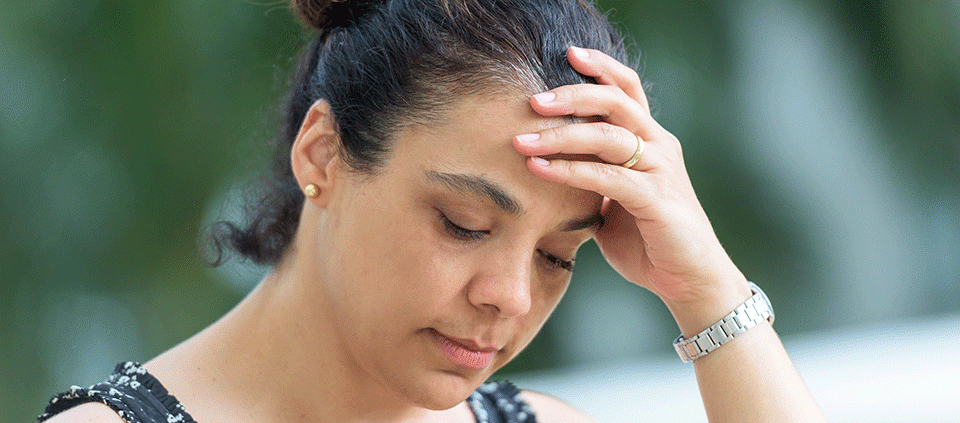Finding a New Identity After Loss

Identity consists mainly of our perceptions of ourselves based on the people and things we are attached to. When we lose them, we lose part of who we are. And yet life continues. Remember the feelings upon waking up in the immediate days and weeks following a profoundly huge loss? The body, moving in a robotic way, fighting against the lethargy of a tired mind, eyes barely open, two feet walking to the bathroom out of necessity?
Think of the body, the master survivor, maintaining life with the audacity to continue doing what it does. Despite our despair, despite our doubts, the amazing intelligence of our body is a powerful testament to the continuation of our existence.
Imagine a kitchen where you’ve cooked for the past 20 years, one with no ventilation, just tiny windows and a stove with slow, inefficient electric burners. One day the kitchen burns to the ground. Because you are hungry, because your body needs fuel, you need to continue cooking. Perhaps you can improvise and cook meals temporarily in the living room, or manage for a while on an outdoor grill, but the need for an indoor kitchen is painfully apparent, so you must rebuild it.
Is the new kitchen going to have ventilation or not? Big or small windows? Slow electric burners or quick and efficient gas burners? In order to define these details, you need to question your real needs and desires, likes and dislikes.
After all, you have cooked in that kitchen for years and are familiar with every detail, every nook and cranny. The memories of that kitchen may be overwhelmingly powerful to you, but now it is time to start imagining a new, more modern version that will serve your new needs.
Needs shift from basic survival instincts to those of a fuller, more spiritual vision of our life. Interestingly, many of us will gravitate to the familiar design of the old kitchen. But given time for reflection, new ideas and images will start to emerge that help us come closer to who we really are, and who we want to become.
Many of us identify who we are through our homes. Sometimes, the home is thought of as an extension of our physical bodies, something important to consider when working with grief. Identity is formed through what the body learns from its environment. The following two examples illustrate that.
Since a three-year-old cannot buy a car, rent a home, or find a job, the child must rely entirely on an adult caregiver. In this case, the father constantly puts down the three-year-old when he performs well. But complying with his father’s expectations can be the difference between life and death. Consequently, the child learns either to become an underachiever or to hide his achievements so as not to upset his father.
The survival mechanism that informs the mind is deeply rooted in the wisdom of the body maintaining life at all costs. Putting our fingers in a live electric socket once gives the body enough information to avoid getting shocked again. The body has excellent cellular memory and keeps that survival mechanism alive. Even years later, while fixing a malfunctioning socket and knowing the power is off, your body still alerts you internally with caution signs warning of danger.
When defining ourselves after loss, it is very common to repeat old mechanisms, perform the same learned behaviors, and chant the same inner monologue because that is how we learned to survive. Repeating these behaviors grants us renewed suffering simply because our actions are antiquated and no longer match our present reality.
We must revisit the situation with new eyes, identifying our present needs and using our newly acquired skills—the ones lacking during the early formative years. Although old habits are difficult to change, respecting their power can actually be life affirming. We can see them in action and recognize them as a sign of the amazing intelligence of our bodies. Witnessing our broken heart’s struggle to cope with the pain of loss and manage the accompanying symptoms of confusion and disorganized thinking is quite remarkable.
Isn’t it a superbly opportune time to reimagine a new design when we no longer have the old kitchen, and yet our need for the food that’s cooked in it is as real as the fire that consumed it? This is the opportunity hidden in the grief we experience. This is the transformative journey I’m talking about, the process that can take us from the void of devastation after loss to the fullness of a consciously lived life.
Excerpted with permission from Yoga for Grief Relief: Simple Practices for Transforming Your Grieving Mind and Body, ©2014, by Antonio Sausys.
Antonio Sausys, MA, IGT, CMT, C-IAYT, a somatic psychologist and yoga therapist specializing in grief counseling and therapy, is the author of Yoga for Grief Relief: Simple Practices for Transforming Your Grieving Mind and Body.
Full Bio and Programs